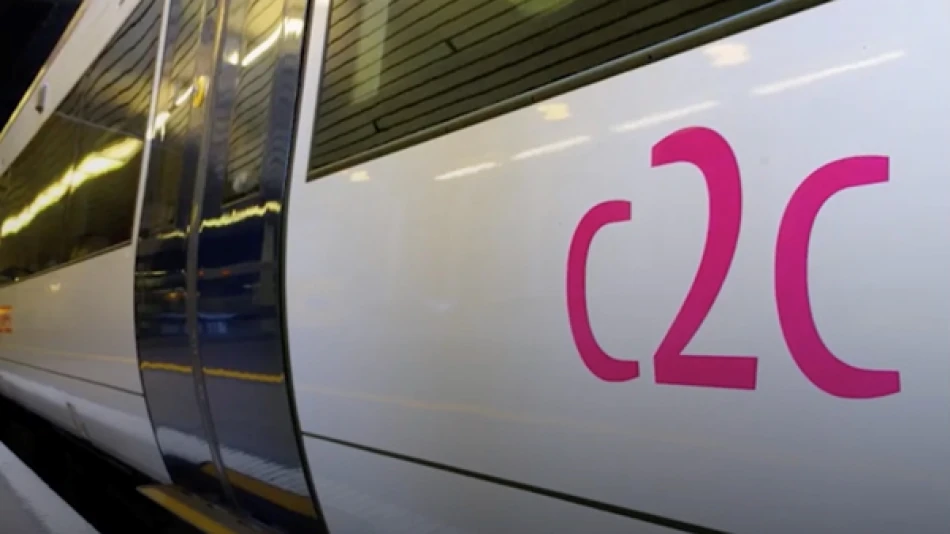
Britain Nationalizes Second Rail Operator, Ensuring Reliable Train Travel
Britain's Labour Government Accelerates Rail Nationalization with Second Takeover
The UK's Labour government has completed its second rail franchise nationalization since taking power, bringing the C2C railway service under public control. The move marks another step in Labour's broader strategy to reverse decades of rail privatization, signaling a fundamental shift in how Britain approaches public transport infrastructure and challenging the market-driven policies of previous Conservative administrations.
C2C Returns to Public Hands After Italian Ownership
C2C, which operates train services between London's Fenchurch Street station and south Essex, officially transferred to public ownership on Sunday. The franchise had been operated by Italy's state-owned railway company Trenitalia since 2017, creating the unusual situation where a foreign government effectively controlled a slice of Britain's transport network.
The transition will be managed by the Department for Transport's operator of last resort, which oversees rail services on behalf of the British government during ownership changes. Officials have assured passengers that pre-purchased tickets remain valid and that fares will not change as a direct result of the ownership transfer.
Performance Metrics Support Nationalization Case
The timing of C2C's nationalization comes as the service demonstrates relatively strong performance metrics. According to Transport Focus, Britain's transport watchdog, C2C achieved an 89% passenger satisfaction rating in its latest survey—ranking sixth among 22 train operating companies nationwide.
This performance data provides Labour with ammunition for their argument that public ownership can maintain or improve service quality, countering longstanding Conservative claims that private competition drives better outcomes for passengers.
Strategic Implications for Britain's Transport Future
Breaking with Thatcher-Era Privatization
Labour's rail nationalization program represents one of the most visible reversals of Margaret Thatcher's privatization legacy. The policy shift reflects growing public dissatisfaction with Britain's fragmented rail system, where multiple private operators have struggled with punctuality, capacity, and fare affordability issues over the past three decades.
Economic and Political Calculations
From a fiscal perspective, bringing rail services in-house eliminates profit margins that previously flowed to private shareholders, potentially allowing more revenue to be reinvested in infrastructure and service improvements. However, it also places the financial risks of railway operations directly on government balance sheets.
The move positions Labour as delivering on core campaign promises while creating a tangible policy contrast with Conservative predecessors. Public ownership of essential services remains popular among Labour's base and appeals to voters frustrated with privatized utilities' performance across multiple sectors.
Broader Context of European Rail Models
Britain's shift toward rail nationalization aligns with practices across much of Europe, where state ownership or heavy state involvement in railways remains the norm. Countries like Germany, France, and Italy have maintained significant public control over their rail networks while achieving generally higher satisfaction rates and better integration than Britain's privatized system.
The C2C takeover demonstrates that Labour views public ownership not as ideological positioning, but as a practical solution to decades of underinvestment and fragmented service delivery in Britain's transport infrastructure.
Most Viewed News

 Layla Al Mansoori
Layla Al Mansoori






